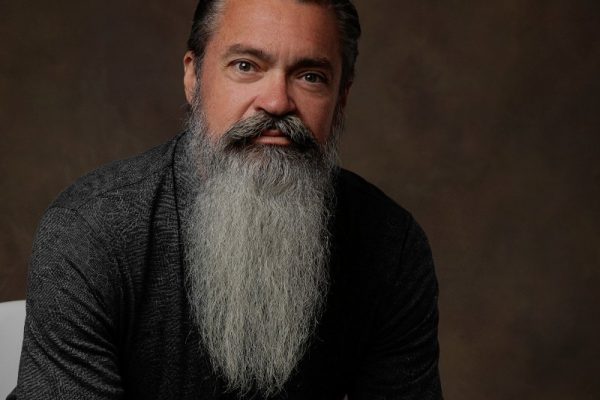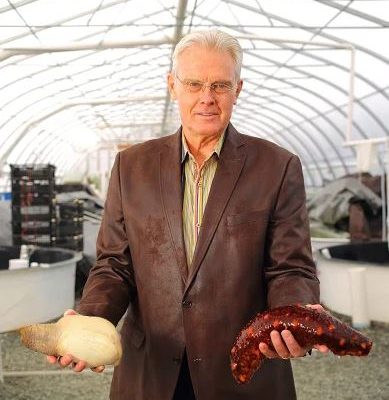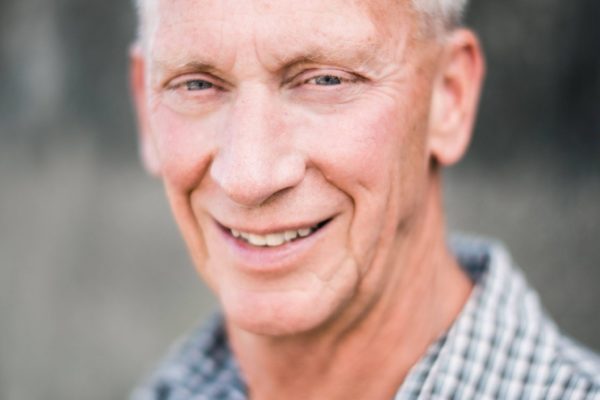SPEAKER
Lourdes Gant, Edgar Rudberg
Lourdes Gant 00:05
As a business owner of an aquaculture company, how can you take the first step to be profitable and sustainable at the same time? That’s what we’re going to be talking about in these episodes. Hello, and welcome to the Business of Aquaculture podcast. This is the podcast for the Sustainable Business movement in the Aquafarming and ocean ranching industries. This podcast aims to amplify the voices of entrepreneurs addressing the United Nation global goals, aka Sustainable Development Goals number 14, to conserve and sustainably use the oceans and the seas. Listen to fellow business agriculturists in their journey in this new model of food production of making their business sustainable, and helping the ecology of the ocean, while also making a profit all at the same time. Get inspired to learn how even small to medium businesses can make an impact to save the seas. Leave a legacy and have a better quality of life. One of our goals is to take away a nugget of wisdom that will help your business move from the industrial revolution to business 5.0. Our vision is that of collaboration in the agriculture industry. I’m Lourdes Gant, your host. As an agriculture business, how do you bridge all the activities you have to do in your operations and how to focus on what matters? This episode is dedicated to answering that question. So listen in and I hope you enjoy this episode. If you listen to episode seven-season three, we discussed how Wittaya Aqua helps aquaculture operations be more profitable, sustainable, and environmentally friendly by making sense of your aquaculture data. Welcome to season three, Episode Eight of the business of aquaculture this episode let’s welcome Edgar Rudberg, who is the CEO of Nucleic Sensing Systems, LLC. They develop and implement innovative equipment and solutions that provide insight into critical biological activity. There recently was in the Innovation Award 2021. Welcome to the show, Edgar.
Edgar Rudberg 02:15
Thanks much for having me.
Lourdes Gant 02:17
As the third generation of his family in the voting industry, Dr. Wood Berg has a passion for Outdoor Recreation and Conservation. He’s an avid angler, both fisherman Hunter and boater. As an entrepreneur for over a decade, he has developed numerous conservation-focused products that go to national distribution, his Ph.D. in natural resources, Science and Management, blended communication, and psychological theory, to catalyze an individual’s adaption to conservation behaviors on lakes. This is really a good background that you have, maybe you can tell us a little bit more about how you got into the industry.
Edgar Rudberg 02:52
Sure, absolutely. So I received an undergrad in biology and a minor in communications. The reason being I really found that it’s difficult in the sciences and in particular in sustainability, to communicate about the important science that we’re doing to external audiences. And so I decided, you know, after graduating what your what was the most fun job that I thought I could have, and decided to move down to the Florida Keys and teach about marine science, and eventually moved up north, if you will, and went to the University of Miami for my master’s in Marine Affairs and policy. And that’s where I really got my first taste of aquaculture with the work that’s being done there, particularly for offshore with cobia and did some fieldwork in American Samoa and eventually went back to school after working for state agencies to get a Ph.D. in natural resources science and really was interested in how we can catalyze the adoption of conservation or sustainable behaviors. And throughout that, I really realized one of the major barriers to the adoption of more sustainable practices is simply having the tools at your fingertips, right. So for example, if there isn’t a curbside collection of recycling at your home, you’re unlikely to do it. And so I have always sought to develop products that help catalyze and make conservation and sustainable behaviors easier. That’s what brought me to, I don’t know rain girl business, a soil amendment business, and then my business partner Mark Appleby, Walker, and I started a company called CD3. And we manufacture aquatic invasive species prevention infrastructure that goes at boat ramps that empower boaters and anglers to clean, drain and dry their boats. And as part of that process, we became very interested in decontamination efficacy, and the ways in which we can show that boat trailers, etc. have actually been decontaminated. And that led us to a partnership with the University of Montana. And eventually the developments of the tracker and our new business, nucleic sensing systems. And really our goal with nucleic sensing systems is to provide a biological smoke alarm for aquaculture producers so that they really understand and know early, the types of potentially harmful organisms that could be bacteria, viruses, harmful algal blooms, parasites, and other diseases, so that they can take mitigative action early and take the right type of mitigation, so that we can reduce things like antibiotic use, or feed at certain times draw from different water sources, etc. So really trying to make the agriculture industry or empower the aquaculture industry to be more sustainable. And to have the, as I said, the data they need at the time they needed to do so.
Lourdes Gant 05:59
I love, I love this background. It’s so brilliant. I love when you especially when you mentioned having the tools at our fingertips. I always believed in the adage that a vision without structure is just a pipe dream. So you really hone in on that by having all these tools that I needed to be able to empower agriculturists. That’s so good. My next question is, what’s one thing you can share with the business agriculturist that can make a big difference in their organization.
Edgar Rudberg 06:27
What we are going to make is a fundamental change in how aquaculture producers do their day-to-day work. Obviously, agricultural producers are heavily relying upon the physical and chemical properties of the water that they have, you know, whether they’re onshore or offshore, those are really critical elements for their production. And the biological side is equally as critical. And I think that’s what we’re really going to provide the aquaculture industry is away and a metric by which they can measure other biological activity that’s happening in their ponds or externally.
Lourdes Gant 07:07
Is there a specific tool that you guys have in these tools?
Edgar Rudberg 07:12
Our flagship technology is called the tracker. And it is an autonomous infield, the continuous detector of what we call environmental DNA. Every living creature sheds cells and within those cells, his DNA, and our technology can pick up that DNA, and therefore tell you what’s in the water. If that makes sense.
Lourdes Gant 07:37
It does make sense. Would you care to share the story of how this came about? Who invented it? What was it? Was there a particular event that happened that led to the invention of the tracker?
Edgar Rudberg 07:49
Sure. The original inventor of the trackers is Dr. Cody Youngbull. And he while at the University of Montana, developed the tracker as a means to detect aquatic invasive species, particularly Quagga and zebra mussels in western states. And that really was the catalyst for that technology. And then we saw it and we were instantly enamored and intrigued by the technology and what its future capabilities could be. And that’s where we ended up partnering and working together to continue to commercialize the technology.
Lourdes Gant 08:24
I love that you guys are doing this in a high-tech and high-touch manner, especially when you mentioned the words knowing the environmental DNA so we can be proactive to mitigate and have actions before there’s a disaster. It’s so brilliant, how would that kind of merge together? So my last question to you is, share what’s your biggest insight since you’ve been in the industry.
Edgar Rudberg 08:46
The industry is critical. When I look at protein production worldwide, and how much we are leaning upon ever depleting natural stomachs. The biggest eye-opener for me is as we grow in population in the world, we really are going to increasingly rely upon aquaculture to provide the needed food for that growing population. And there’s just so much opportunity to really increase our tools when it comes to high technology, Internet of Things technology. It’s just a really interesting time that we can really push the industry forward.
Lourdes Gant 09:24
And I said that that was my last question but you just mentioned it about tools, high tech, and the Internet of Things. I had a follow-up question. Please. I hope you don’t mind. So how would you tell someone who is maybe a one-month farmer to integrate IoT Internet of Things to their operations if it’s like a really bare-bones, aquaculture operation?
Edgar Rudberg 09:51
So there are a lot of new devices and technologies that are out there that aren’t going to be crazy expensive. You think about Okay, how am I gonna explain this technology to my parents, right, and try to keep it as simple as possible? Well, they have, for example, a technology in their basement that will email them if it gets wet. So if there’s water in the basement, they’ll get an email. Or if the temperature goes below a certain 33 degrees or 35 degrees Fahrenheit in the house, they’ll get an email or a text, that technology is not wildly expensive, you know, we’re talking $30, even people at their homes, you know, their blink cameras that can turn on and send their phone a picture, when there are movements in their yard, I think all across the board, as well as in aquaculture, the chemical and physical parameters, there are more and more inexpensive monitoring solutions, that that really can help inform the aquaculture producer.
Lourdes Gant 10:52
Thank you so much I am so really enamored with this idea of making it simple. So you just give that practical advice of how they can actually apply this in their operations, whether they’re big or small. So thank you so much for your time today. Edgar, my biggest takeaway from our conversation was when you were talking about empowering the industry, I think it’s we’re at the precipice now of where agriculture is really making big strides going to the next level. So we need that empowerment to make that happen, whether that’s with technology with collaborations, and of course with stewardship. So thank you for the time, how can they get in touch with you?
Edgar Rudberg 11:32
Yeah, absolutely. My email address is Ed@NS2, the number two co.com. Or check us out on the web@www.ns2co.com. Again, it’s www.ns2co.com love to hear from folks.
Lourdes Gant 11:50
Thanks to that Edgar. And you have a wonderful day. So our subscribers we appreciate your time listening to the show. Remember you build the home in the Philippines via B1G1.com. For every episode, so share away. See you next week. Thanks, everyone. Thanks, Edgar.
Edgar Rudberg 12:04
Thank you. Bye.
Lourdes Gant 12:08
Thank you for listening, and I hope you are inspired by this episode. Do take a moment and share this with your friends and colleagues and rate and review the podcast wherever you get your podcasts. I’d love to know what your biggest takeaway from this conversation has been? What are you going to do differently? Please share your thoughts across social media and tag us for links and show notes for this episode, visit our website www.sustainableagriculture.ca/podcast. Thank you again. I hope you will join me on the next episode and together we can help create a better business in agriculture.



